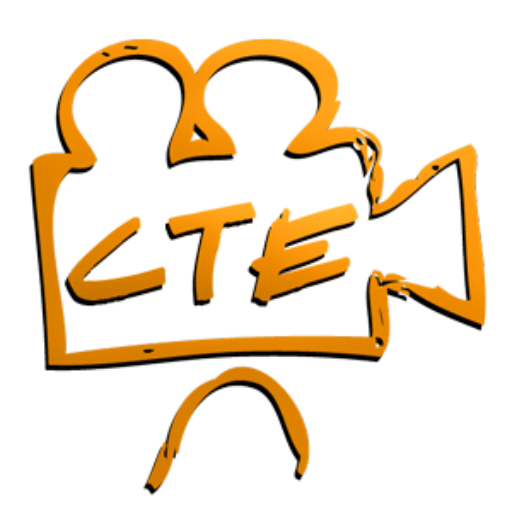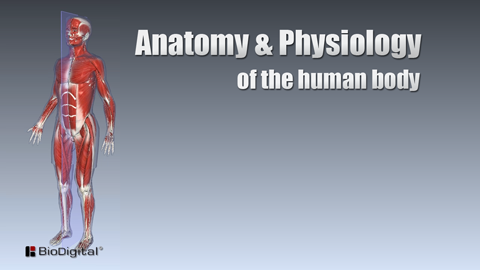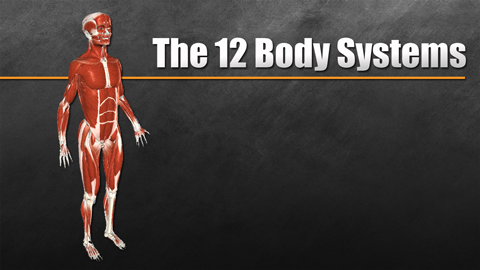Anatomy & Physiology
-
Health Sciences - Anatomy and Physiology
$85.99Successfully Added to your Shopping CartAdding to Cart...
Cancel anytime, no long-term commitment.
Anatomy is the study of the structure and relationship between body parts. Physiology is the study of the function of body parts and the body as a whole. The goal of this CTE Skills Anatomy and Physiology video series is to present a full understanding of the functioning of the human body. To accomplish this, Anatomy and Physiology will be explained in three separate categories. Basic Cell Structure, Mapping of the Body, and a detailed explanation of the Body Systems.
Below you can explore detailed descriptions of each video available in the Anatomy and Physiology library.
Available Courses
Anatomy and Physiology will be explained in three separate categories. Basic Cell Structure, Mapping of the Body, and a detailed explanation of the Body Systems. See CTE Skills’ Medical Terminology series as well to gain a better understanding of the terminology that corresponds to each of the body systems.
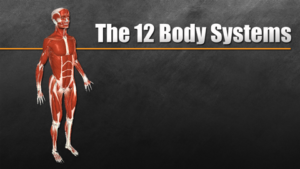
Body Systems
A body system is a group of organs working together to perform a specific function in the body, like digestion, respiration, or circulation, with major systems including the digestive, respiratory, cardiovascular, nervous, endocrine, muscular, skeletal, integumentary, lymphatic, urinary, and reproductive systems; each playing a vital role in maintaining overall bodily function.
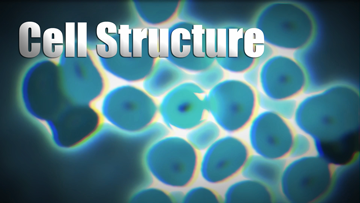
Cell Structure
In this series we will learn about the human cell structures and their specific functions each must perform and complete in order for the Human organism to stay alive and healthy throughout its expected “Life Cycle”. In addition we will discuss the “disease process” which is essentially a dysfunction that can occur at any time when any of the six basic functions of a healthy organism is negatively impacted. We will look at the main factors responsible for initiating the “disease process”.

Mapping the Body
Mapping of the body is extremely important to anyone in the Health Sciences or medical fields. Whether you are a nurse aide or a surgeon, you need to understand the body in order to care for a patient properly. Views, body planes and directional terms will the first of two videos in this Mapping the Body series. In the next video we will cover the Body Cavities, Quadrants and regions.
BODY SYSTEMS
In this series we will learn that a body system is a group of organs working together to perform a specific function in the body, like digestion, respiration, or circulation, with major systems including the digestive, respiratory, cardiovascular, nervous, endocrine, muscular, skeletal, integumentary, lymphatic, urinary, and reproductive systems; each playing a vital role in maintaining overall bodily function.
-
Health Sciences - A & P - Body Systems
$65.99Successfully Added to your Shopping CartAdding to Cart...
Cancel anytime, no long-term commitment.
CTE Skills’ Body Systems Category consists of 10 videos.
Explore comprehensive descriptions for every video in the Body Systems category along with a short snippet of each video.
Videos included in Body Systems subscription:
Integumentary System Parts 1, 2, and 3, Skeletal System, Muscular System, Cardiovascular System, Respiratory System, Digestive System, Urinary System, and Nervous System
Integumentary System Pt. 1
The integumentary system is one of twelve body systems in our human anatomy. The integumentary system is made up of three major parts. The skin, hair and nails. This video will take a closer look at each of these three parts.
Integumentary System: epidermis, dermis, hypodermis.
Integumentary System Pt. 2
This video discusses the main functions of the integumentary system.
Protection, sensory perception, body temperature, storage, absorption, excretion, production, pigmentation, melanin, carotene, albino, erythema, jaundice, cyanosis, skin eruptions, macules, freckles, papules, pimples, Vesicles, blisters, pus, pustules, crust, scab, wheals, hives, and ulcers.
Integumentary System Pt. 3
So far in this CTE Skills Anatomy and Physiology series we’ve covered the main parts and the main functions of the integumentary system. In part 3 we will be going over the diseases of the skin.
Acne, Skin Cancer, Athletes Foot, Melanoma, Non Melanoma, Dermatitis, Eczema, Impetigo, Psoriasis, Ringworm, Verrucae, and Warts.
Skeletal System
The Skeleton is the framework of the body. Without it the body would be without form and it wouldn’t even be possible to walk upright. Among it’s many functions the skeleton serves to protect vital organs, such as the brain, the heart and lungs.
Muscular System
The muscular system is made up of over 600 muscles. While we won’t be covering all 600 individual muscles in this overview video, we will be discussing:
- Main functions of the muscular system
- 5 major properties of the muscular system
- 5 types of muscle movements withing the muscular system
- 3 types of muscles within the muscular system
- and how all of this works together to make up the muscular system.
Cardiovascular System
The cardiovascular system, also known as the circulatory system, is the transportation system of the body. The major structures that make this possible are the heart, blood vessels and blood. Simply put, the heart pumps the blood in order to move nutrients through the blood vessels to nourish and to remove metabolic wastes from the body.
The purpose of this video is to present a basic understanding of the Cardiovascular System. A more in depth study of the system will be presented in other CTE videos where we will look into each specific structure and function of the Cardiovascular system.
Respiratory System
The Respiratory System plays a major part in our survival and works hand in hand with the Circulatory System.
In this short video about the Respiratory System, we will discuss how a breath of fresh air is taken in through the respiratory pathway by the following structures…the nose, pharynx, larynx, trachea, bronchi tubes, and the lungs including the alveoli. All of this will be explained in this easy to understand detailed animation of the Respiratory System.
Digestive System
The Digestive System is also known as the “gastrointestinal system”. This system fulfills two of the basic and essential requirements for being alive… Food intake and Waste elimination.
In this video we will be discussing the functions of the Digestive System, the connection with the immune system, the components and accessory organs that make it up, as well as the process of digestion.
Urinary System
The Urinary, or Excretory System is another system by which the body rids itself of unwanted Toxins or (waste). Basically, the urinary system’s main purpose is to maintain the body’s “homeostasis”. In other words, the urinary system’s main function is to maintain the body’s acid-base balance.
Nervous System
The basic purpose of the Nervous System is to coordinate all of the activities of the body. It enables the Body to respond and adapt to changes that occur both inside and outside the body.The two major parts to the Nervous System are the Central Nervous System and the Peripheral Nervous System. The Central Nervous System is also divided into two major structures. The Brain and the Spinal Cord.
Cell Structure
In this series we will learn about the human cell structures and their specific functions each must perform and complete in order for the Human organism to stay alive and healthy throughout its expected “Life Cycle”. In addition we will discuss the “disease process” which is essentially a dysfunction that can occur at any time when any of the six basic functions of a healthy organism is negatively impacted. We will look at the main factors responsible for initiating the “disease process”.
-
Health Sciences - A & P - Cell Structure
$85.98Successfully Added to your Shopping CartAdding to Cart...
Cancel anytime, no long-term commitment.
CTE Skills’ Cell Structure Category consists of 3 videos.
Explore comprehensive descriptions for every video in the Cell Structure category along with a short snippet of each video.
Videos included in the Cell Structure subscription:
Introduction to the Human Cell, Anatomy and Physiology of the human cell, and Mitosis/Cell Division
Human Cell
In this series we will learn about the human cell structures and their specific functions each must perform and complete in order for the Human organism to stay alive and healthy throughout its expected “Life Cycle”. In addition we will discuss the “disease process” which is essentially a dysfunction that can occur at any time when any of the six basic functions of a healthy organism is negatively impacted. We will look at the main factors responsible for initiating the “disease process”.
Anatomy & Physiology of the Human Cell
The Anatomy (Structure) and Physiology (Functions) of the human cell. The human cell has an outer protective cover called the cell membrane. A semifluid called cytoplasm is contained within the membrane. The structures that make up the cell are located in the cytoplasm and are called organelles. Nucleus, Mitochondria, Ribosomes,Lysosomes, Centrioles, Golgi apparatus, Endoplasmic reticulum.
Mitosis / Cell Division
Mitosis is an asexual reproduction where a single cell divides into 2 identical cells (if mutation has not occurred) This video covers the process of cell division and all the key players including the nucleus, Chromatin, Chromosomes, Chromatids, Centrioles, Centrosome, Spindle Fibers, Centromeres, Cytoplasm and last but not least The Two new identical Cells.
MAPPING THE BODY
In this series you will learn about views, body planes and directional terms in the first video. In the next video you will learn about the body cavities, quadrants and regions.
-
Health Sciences - A & P - Mapping the Body
$8.99Successfully Added to your Shopping CartAdding to Cart...
Cancel anytime, no long-term commitment.
CTE Skills’ Body Systems category consists of 3 videos.
Explore comprehensive descriptions for every video in the Body Systems category along with a short snippet of each video.
Videos included in the Mapping of the Body subscription:
Mapping the Body – Part 1, Mapping the Body – Part 2
Mapping the Body Part 1
In this series we will learn about the human cell structures and their specific functions each must perform and complete in order for the Human organism to stay alive and healthy throughout its expected “Life Cycle”. In addition we will discuss the “disease process” which is essentially a dysfunction that can occur at any time when any of the six basic functions of a healthy organism is negatively impacted. We will look at the main factors responsible for initiating the “disease process”.
Integumentary System: epidermis, dermis, hypodermis.
Mapping the Body Part. 2
Mapping of the body is extremely important to anyone in the Health Sciences or medical fields. Whether you are a nurse aide or a surgeon, you need to understand the body in order to care for a patient properly. Views, body planes and directional terms will be the first of two videos in this Mapping the Body series. In part 2 we will cover the Body Cavities, Quadrants and regions.
